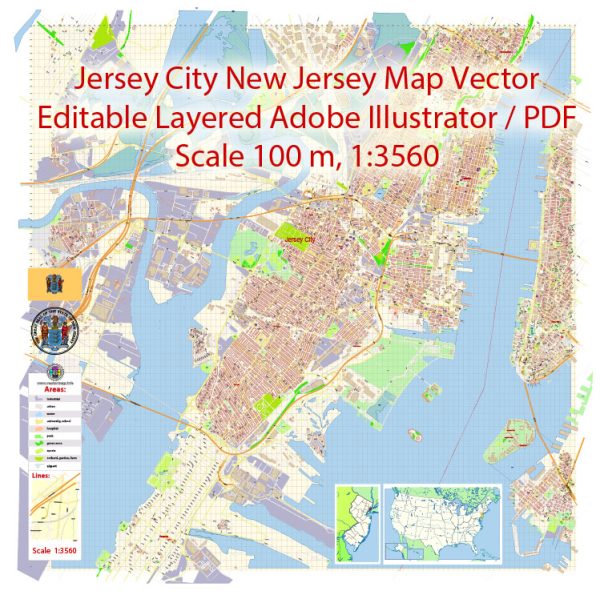Jersey City, New Jersey, has a rich history that dates back to the early days of European exploration and settlement in North America. Here is a brief overview of the history of Jersey City’s creation and development:
- Early Settlement: The area that would become Jersey City was originally inhabited by the Lenape Native American people. The first European explorer to visit the region was Henry Hudson, an Englishman sailing under the Dutch flag, who anchored his ship, the Half Moon, in the waters of what is now New York Harbor in 1609. This visit marked the beginning of European contact with the area.
- Dutch Colonization: The Dutch established the colony of New Netherland in the early 17th century, and the land that is now Jersey City was part of this colony. The town of Bergen, one of the first permanent European settlements in New Jersey, was founded in 1660 and became an important early center of Dutch culture and commerce.
- English Takeover: In 1664, the English seized control of New Netherland from the Dutch, and the area that is now Jersey City came under English rule. The English granted land rights to various individuals, and the region saw an increase in settlement and development.
- Formation of Jersey City: In the 19th century, several smaller communities in the area, including Bergen, merged to form the city of Jersey City, which was officially incorporated on January 28, 1820. The name “Jersey” is derived from the English Channel Island of Jersey, as many of the early settlers had connections to the island.
- Industrial Growth: Jersey City’s location on the Hudson River made it an ideal place for industrial development, and it became a hub for manufacturing, transportation, and commerce. The opening of the Morris Canal in 1831 and the completion of the Central Railroad of New Jersey in the mid-19th century further contributed to the city’s growth.
- Immigration and Urbanization: In the late 19th and early 20th centuries, Jersey City, like many other American cities, experienced an influx of immigrants, particularly from Europe. The city’s population and diversity increased as people from various backgrounds settled in the area.
- 20th Century: Jersey City continued to develop as an industrial and transportation center throughout the 20th century. However, like many urban areas, it also faced challenges, including economic downturns and urban decay.
- Revitalization: In recent decades, Jersey City has undergone significant revitalization and gentrification. It has become a desirable place to live and work, with a thriving arts and cultural scene, as well as a growing business district.
Today, Jersey City is known for its historic neighborhoods, diverse population, and proximity to New York City, which is just across the Hudson River. It continues to be an important part of the greater New York metropolitan area and a significant center of commerce and culture in its own right.


 Author: Kirill Shrayber, Ph.D.
Author: Kirill Shrayber, Ph.D.